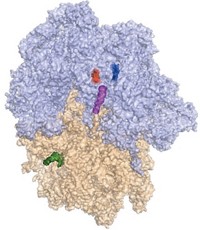Advertisement
Grab your lab coat. Let's get started
Welcome!
Welcome!
Create an account below to get 6 C&EN articles per month, receive newsletters and more - all free.
It seems this is your first time logging in online. Please enter the following information to continue.
As an ACS member you automatically get access to this site. All we need is few more details to create your reading experience.
Not you? Sign in with a different account.
Not you? Sign in with a different account.
ERROR 1
ERROR 1
ERROR 2
ERROR 2
ERROR 2
ERROR 2
ERROR 2
Password and Confirm password must match.
If you have an ACS member number, please enter it here so we can link this account to your membership. (optional)
ERROR 2
ACS values your privacy. By submitting your information, you are gaining access to C&EN and subscribing to our weekly newsletter. We use the information you provide to make your reading experience better, and we will never sell your data to third party members.
Synthetic Biology
Artificial organelles are designed for protein engineering
Phase separation sequesters the machinery for repurposing stop codons
by Celia Henry Arnaud
March 30, 2019
| A version of this story appeared in
Volume 97, Issue 13

Designer organelles might make it easier to produce engineered proteins in mammalian cells. Edward A. Lemke of the Johannes Gutenberg University Mainz’s Institute of Molecular Biology and the European Molecular Biology Laboratory and his coworkers have made artificial membraneless organelles from “assemblers” that are hybrids of truncated motor proteins that assemble on microtubules and proteins that phase separate above a minimum concentration (Science 2019, DOI: 10.1126/science.aaw2644). The two types of proteins assemble into structures that allow the simultaneous spatial and phase separation of the machinery needed for synthesizing proteins with nonnatural amino acids. That machinery includes the suppressor transfer RNA and tRNA synthetase needed for repurposing the Amber stop codon—a signal for cells to stop protein translation—as one that inserts nonnatural amino acids into proteins. The researchers also add a tag that steers the target messenger RNA to the organelle. This strategy enables the researchers to target specific Amber stop codons without affecting the others found in mammalian cells. They used the system in cultured human kidney cells. Biologists have worried that indiscriminate suppression of Amber stop codons could make “weird things happen,” Lemke says. “We have conceptually solved the toxicity/specificity problem of Amber suppression.” In the future, Lemke wants to use smaller phase-separating proteins to make the system even less invasive. He also plans to make other types of artificial organelles that perform novel functions in semisynthetic organisms.



Join the conversation
Contact the reporter
Submit a Letter to the Editor for publication
Engage with us on Twitter